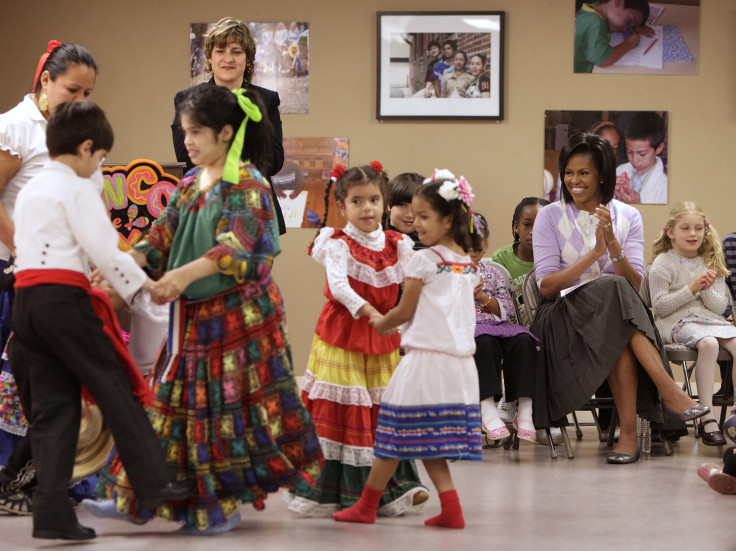National Hispanic Heritage Month 2015: Fun Facts About Why We Celebrate Latinos

Latinos across the country will celebrate National Hispanic Heritage Month starting this week by eating South American treats, dancing to salsa music and paying tribute to successful Hispanics like Cuban singer Gloria Estefan, Mexican-American astronaut Ellen Ochoa and Puerto Rican baseball player Roberto Clemente.
National Hispanic Heritage Month is celebrated annually from Sept. 15 to Oct. 15 by honoring the histories, traditions and contributions of American citizens whose ancestors came from Latin America and Spain. The heritage holiday was first celebrated in 1968 under President Lyndon Johnson and was designated by President Ronald Reagan in 1988 to cover a 30-day period.
The White House proclamation in 1968 about the week stated, "Wishing to pay special tribute to the Hispanic tradition, and having in mind the fact that our five Central American neighbors [Guatemala, El Salvador, Honduras, Nicaragua and Costa Rica] celebrate their independence day on the 15th of September, and the Republic of Mexico on the 16th, the Congress, by House Joint Resolution 1299, has requested the president to issue annually a proclamation designating the week including Sept. 15 and 16 as National Hispanic Heritage Week."
See you at @UTDallasMC's Hispanic Heritage Month Kickoff (food and fun!) at 7:30 p.m. tomorrow http://t.co/DcDItPAM9Q pic.twitter.com/Kr9YKuYvL4
— UT Dallas (@UT_Dallas) September 14, 2015
Sept. 15 marks the start of National Hispanic Heritage Month because it is also the anniversary of independence for many Latin American countries, including Costa Rica, El Salvador, Guatemala, Honduras and Nicaragua. Mexico and Chile celebrate their independence days Sept. 16.
“Many Hispanic-Americans trace their roots to the cultures of the indigenous peoples of the Americas, including the Arawaks (Puerto Rico), the Aztecs (Mexico), the Incas (South America), the Maya (Central America, and the Taínos (in Cuba, Puerto Rico and other places),” National Hispanic Heritage Month’s website states. “Some trace their roots to the Spanish explorers, who in the 1400s set out to find an easier and less costly way to trade with the Indies. Other Latinos trace their roots to the Africans who were brought as slaves to the New World.”
There are roughly 54 million Hispanics in the U.S., making them the nation’s second-largest racial or ethnic group. They represent 17 percent of the U.S. population, up from 5 percent in 1970. Most Latinos in the U.S. are of Mexican origin.
© Copyright IBTimes 2024. All rights reserved.












